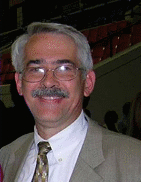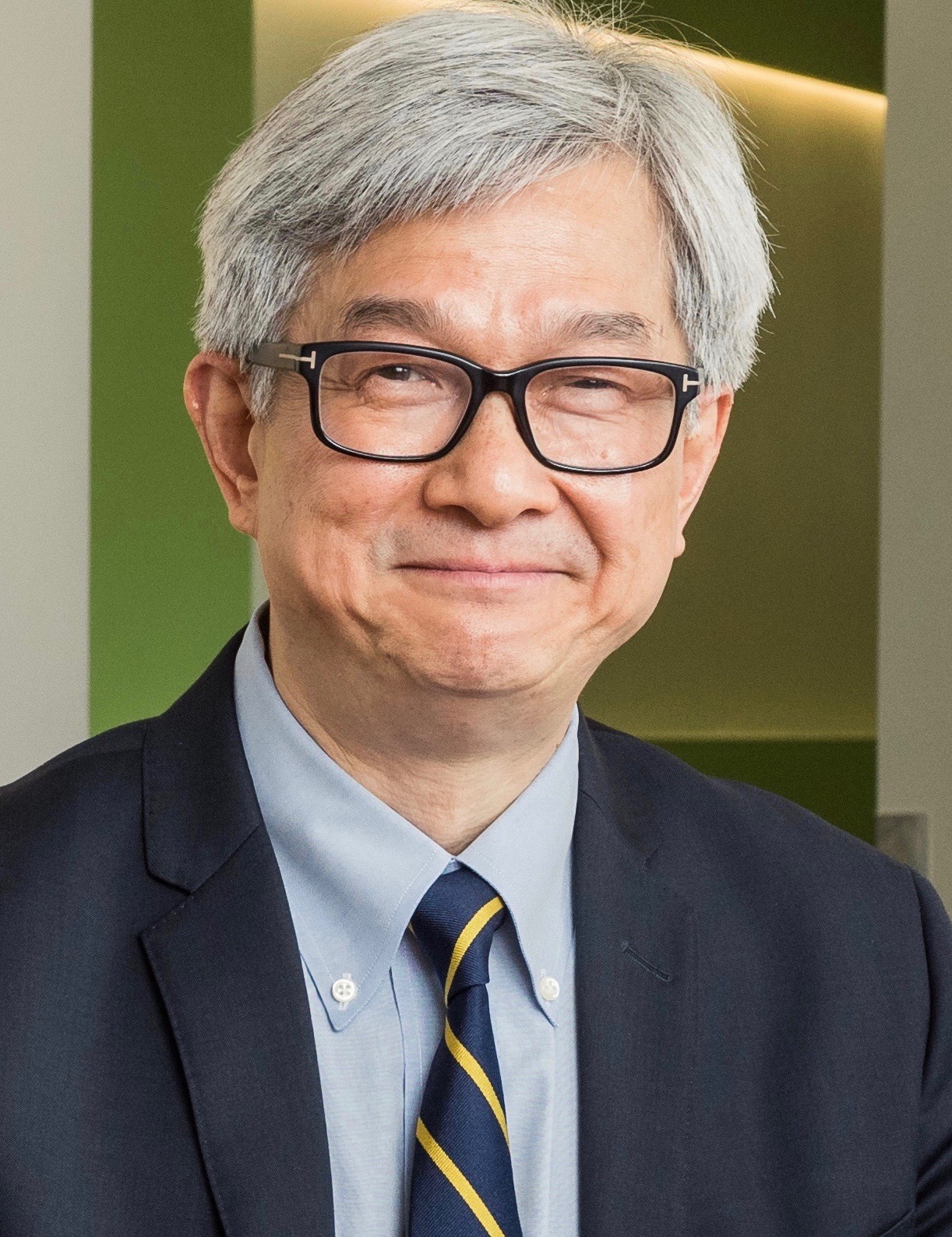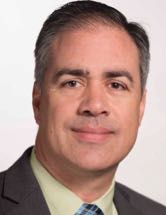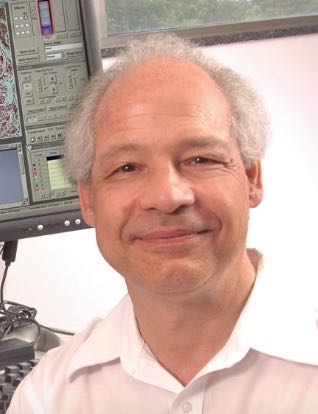Other Track AgendasCirculating DNA, Circulating RNA, Circulating Tumor Cells | Exosomes and Microvesicles | Sample Preparation and Analysis |

Monday, 23 March 201508:00 | Conference Registration, Coffee, and Breakfast Pastries | |
Joint Plenary Session: Extracellular Vesicles and Extracellular Nucleic Acids as Circulating Biomarkers |
| | |
Session Chair: John Palma, Ph.D., Roche Molecular Systems |
| | 09:00 |  | Keynote Presentation Exosomes: From “Dust” to Multiplexed Diagnostic Biomarker
Doug Taylor, Chief Scientific Officer, Exosome Sciences Inc, United States of America
Exosomes are nano-sized vesicles released by all cell types and their
protein and RNA cargo mirror the composition of their originating cells.
In the case of cancer cells, the released exosomes exhibit proteins and
RNA associated with the tumor and can be used as surrogates to define
tumor type and stage and to predict therapeutic responses. While
exosomes possess the FDA-defined features of ideal biomarkers and can be
easily obtained and assessed, several obstacles have limited their
clinical applications. The most critical barrier to their diagnostic
application is the isolation of disease-specific exosomes and
characterization their cargo. Emerging technologies will be discussed by
the isolation of exosomes, associated specifically with cancers,
allowing their use in diagnosis, patient stratification for therapy,
monitoring therapeutic responses in real time and early identification
of recurrence. These approaches target the unique properties and
compositions of specific vesicle populations. The isolation of enriched
pathology-specific vesicles enhances the signal to noise ratio and
allows the identification of markers directly derived from the specific
cell types. By correlating these circulating markers with the molecular
characteristics and real-time clinical parameters, the use of
circulating vesicles represents the ideal, multiplexed marker platform
for clinical management. |
| 09:30 |  | Keynote Presentation Saliva-based Exosomes for Liquid Biopsies
David Wong, Felix and Mildred Yip Endowed Chair in Dentistry; Director for UCLA Center for Oral/Head & Neck Oncology Research, University of California-Los Angeles, United States of America
Constitutive activation of epithelial growth factor receptor (EGFR) is
prevalent in epithelial cancers, particularly in non-small-cell lung
carcinoma (NSCLC). EGFR mutation predicts sensitivity to EGFR-targeted
therapy and mutation detection is mainly based on tissue biopsy, which
is invasive, expensive and time-consuming. Non-invasive, real-time,
point-of-care, inexpensive detection and monitoring of EGFR mutations in
NSCLC patients is highly desirable. We developed a novel core
technology, Electric Field-Induced Release and Measurement (EFIRM),
relying on a multiplexible electrochemical sensor that can detect EGFR
mutations directly from body fluids. EFIRM for EGFR mutation detection
was established in vitro, and correlated with tumor size from
xenografted mice. In clinical application, we demonstrated that EFIRM
can detect EGFR mutations from saliva and serum of 22 NSCLC patients.
And finally, a blinded test was performed on saliva from 40 NSCLC
patient saliva samples. The receiver operating characteristic analysis
indicated that EFIRM detected the exon 19 deletion with an area under
the curve (AUC) of 0.94 and the L858R mutation with an AUC of 0.96. Our
data indicate that EFIRM is effective, accurate, rapid, user-friendly,
and cost effective for the detection of EGFR mutations in saliva of
NSCLC patients. We termed this SAliva-Based EGFR (SABER) Mutation
Detection for detection and monitoring EGFR mutations in saliva of NSCLC
patients. |
| 10:00 |  | Keynote Presentation Performance of a Blood-based Assay for the Detection of EGFR Mutations in NSCLC
John Palma, Chief Medical Officer, Roche Sequencing Solutions, United States of America
|
| 10:30 |  | Keynote Presentation Comprehensive Genomic Profiling in Clinical Oncology: Overcoming the Challenges
Vincent Miller, Chief Medical Officer, Foundation Medicine, United States of America
|
| 11:00 | Coffee Break, Visit Exhibitors and Networking | 11:30 |  | Keynote Presentation Extracellular RNA in Biofluids as Biomarkers of Disease
Xandra Breakefield, Professor, Mass General Hospital (MGH)/Harvard Medical School, United States of America
Most cells in the body release extracellular RNA (exRNA) within vesicles
or in association with ribonucleoprotein/lipoprotein particles. This
overview talk will consider the types of RNA released, the biofluids
analyzed, and modes of evaluation of the quantity and sequence of exRNAs
as a index of different disease states. Examples will be provided for
analysis of exRNA from serum/plasma, urine and cerebral spinal fluid of
cancer patients with a focus on discovery of novel non-coding RNAs and
quantitation of rare, mutant RNAs. |
| 12:00 |   | Keynote Presentation Noninvasive Cancer Genomics and Exploring Potential Clinical Applications of Circulating Tumor DNA
Nitzan Rosenfeld, Senior Group Leader, Cancer Research UK and CSO, Inivata Ltd.
Davina Gale, Head of Molecular Diagnostics, Co-Founder, Inivata, United Kingdom
Novel biomarkers are required to accurately assess tumour burden and
response in cancer. Circulating tumour DNA (ctDNA), containing
tumour-specific DNA alterations, is present in patient plasma as a
fraction of the total cell-free DNA. The study of ctDNA levels and
mutational profile could potentially inform clinical decision making, be
used to monitor tumour dynamics, assess response to treatment and
identify mutations associated with acquired drug resistance. Inivata is
a clinical cancer genomics company focused on harnessing the emerging
potential of circulating DNA analysis to improve cancer testing and
treatment. Novel applications of ctDNA are enabled by Inivata’s
technology platform which includes its proprietary enhanced TAm-Seq™
technology, to allow the detection and analysis of genomic material from
a cancer patient’s cell-free DNA collected through routinely accessible
blood samples. This non-invasive approach – a liquid biopsy – offers a
revolution in how cancer is detected, monitored and treated. |
| 12:45 | Networking Lunch, Visit the Exhibitors and Poster Viewing | |
Session Title: Methodologies and Approaches in Sample Preparation and Analysis from Biofluids |
| | |
Session Chair: Tony Godfrey, PhD. Boston University Medical Center |
| | 14:30 | Challenges in the Deployment of Saliva in Diagnostics Development
David Wong, Felix and Mildred Yip Endowed Chair in Dentistry; Director for UCLA Center for Oral/Head & Neck Oncology Research, University of California-Los Angeles, United States of America
Extracellular RNAs (exRNAs) in biofluids have sparked considerable
interests in their use as disease-specific diagnostic and prognostic
biomarkers. In the last decade, it has been demonstrated the potential
use of salivary RNA for detecting various local and systemic diseases
such as oral cancer, Sjögren syndrome, pancreatic cancer and breast
cancer. The ability of sequence-characterized salivary exRNA by using
next-generation sequencing can further strengthen the advantages of
using saliva as a clinical diagnostic biofluid for biomarker discovery.
Compared with other bodily fluids, saliva can be collected easily and
noninvasively. However, low RNA abundance, small sample volumes, high
fragmentation of RNA and lots of bacterial contents create challenges
for downstream RNA sequencing assays. | 15:00 | Isolation and Characterization of Plasma Extracellular Samples from Clinical Plasma Samples
Dominique PV de Kleijn, Professor Experimental Vascular Surgery, Professor Netherlands Heart Institute, University Medical Center Utrecht, The Netherlands, Netherlands
Easy, cheap, efficient and reproducible isolation of plasma extracellular vesicles is a necessity when processing large numbers of clinical samples in cohort studies. Especially for cardiovascular disease large patient numbers are often needed to validate plasma vesicle markers to show their added value on top of risk factor models. Classical methods like ultracentrifugation are often too time-consuming, expensive and use too large volumes of precious plasma samples. Alternative methods suitable for larger sample numbers and smaller samples are discussed focusing on methods used in cardiovascular disease like: precipitation, column purification or flow cytometry to interrogate clinical samples with biomarkers for diagnosis and prognosis of disease. | 15:30 | Coffee Break, Networking, Exhibit and Poster Viewing | 16:00 |  Technology Spotlight: Technology Spotlight:
Residual Disease Monitoring using cfDNA and ddPCR
Jack Regan, Group Leader, Advanced ddPCR Applications, Bio-Rad Laboratories
Jack will present a recap of published work using ddPCR to monitor cfDNA and also provide commentary on the challenges and future of this field.
| 16:30 | Sequencing Applications from Circulating Nucleic Acids
Kelli Bramlett, Senior Manager, Thermo Fisher Scientific, United States of America
Discussing the challenges and promise in using circulating nucleic acid analysis with next generation sequencing to gain understanding about complex whole body processes and overall health. | 17:00 | New Sample Preparation & Analysis Technologies in the NIPT Field
Michael Lutz, CEO, LifeCodexx, Germany
This presentation will showcase new sample preparation and analysis technologies in the field of non-invasive prenatal diagnosis. | 17:30 |  Technology Spotlight: Technology Spotlight:
Magnetic Bead-based Isolation and Enrichment Methods for Extracellular Vesicles
Hiroaki Sagawa, Senior Manager, JSR Micro Inc
Research in circulating tumor cells, circulating cell-free DNA, extracellular RNA, and Extracellular Vesicles (EVs) have been gaining popularity as a promising non-invasive diagnostic approach. With this backdrop, JSR has focused on the development of EV capture methodologies, keeping in mind future potential uses for EVs in non-invasive diagnostics at the point of care. In this session, a description of a selective capture method of EVs as a potential platform for non-invasive diagnostics will be provided by introducing ExoCap, a magnetic beads based isolation and enrichment method of exosomes from various body fluids and cell culture supernatants. ExoCap consists of Magnosphere magnetic beads particles coupled with antibodies that recognize antigens on the exosome surface, an irrigation solution, and a reagent that releases the captured exosomes for analysis. The antibodies against CD9, CD63, CD81, and EpCAM were specifically selected for this kit. ExoCap can easily separate exosomes within 30 minutes, without ultracentrifuge or any special equipment. A sample amount of 0.1mL is sufficient. In addition, it is an animal free system which is superior to other methods for mass analysis. Moreover, this method enables non-destructive purification of exosomes. To confirm exosomal isolation from diverse body fluids (such as human serum, plasma, urine) and cell culture media, exosomes were examined by western blot, particle size distribution measurement, and scanning transmission electron microscopy (TEM). Exosomes isolated by ExoCap had a lipid bilayer membrane, showed a particle size distribution around 100nm, and expressed tetraspanin molecules.
| 18:00 | Clinical Targeted Next Generation Sequencing using Anchored Multiplex PCR (AMP)
Long Phi Le, Medical Director, Clinical Research Sequencing, The Broad Institute, United States of America
Targeted next-generation sequencing (NGS) is an important approach for both research and clinical applications. This presentation will describe a novel method termed anchored multiplex polymerase chain reaction (AMP) which offers a rapid, economical, and scalable target enrichment solution. We share our experience with developing, validating, and implementing AMP in several clinical assays for fusion transcript detection and cancer genotyping (single nucleotide variants, insertions/deletions, and copy number) using formalin-fixed paraffin-embedded (FFPE) specimens. | 18:30 | Networking Reception: Enjoy Premium Beers, California Wines, and Appetizers with Your Colleagues with a Beautiful View of Boston and The Charles River | 19:45 | Close of Day 1 of the Conference |
Tuesday, 24 March 201507:30 | Morning Coffee and Breakfast Pastries | 08:00 | Breakfast Briefing: Measuring Neutrophil Phenotype in Sepsis from a Single Drop of Blood
Daniel Irimia, Associate Professor, Surgery Department, Massachusetts General Hospital (MGH), Shriners Burns Hospital, and Harvard Medical School, United States of America
The absolute neutrophil count (ANC) is today one of the most common blood tests used in the clinic for evaluating the risk of infections in patients. However, this test implicitly assumes that all patients’ neutrophils are normal and it does not account for possible alterations of their functions. Such alterations occur in patients after burn injury and can significantly reduce the ability of the body to fight infections, even when neutrophils counts are in the normal range. To estimate the risk for infections more accurately, we designed microfluidic devices that measure neutrophil migration with higher precision than ever before. To circumvent the challenging logistics of neutrophil isolation in the clinic, we designed these devices to work directly with one droplet of blood. Using these devices, we identified a set of phenotype markers for the early detection and monitoring of sepsis in patients after major burn injuries. | |
Session Title: Next Generation Sequencing (NGS) as a Means to Interrogate Biomarker Cargo -- How to Incorporate into Practice? |
| | |
Session Chair: Jamie Platt, PhD, Geneuity (Molecular Pathology Laboratory Network, Inc.) |
| | 08:30 | Surveying the RNA-Seq Field
Joshua Levin, Senior Group Leader, Research Scientist, Stanley Center for Psychiatric Research, Klarman Cell Observatory, The Broad Institute of MIT and Harvard, United States of America
RNA-seq allows us to comprehensively characterize the transcripts present in a biological sample. This talk will focus on the “basics” of RNA-Seq as well as how to approach the selection of an appropriate method for specialized RNA-Seq. An overview of key breakthroughs will also be presented. | 09:00 |  | Keynote Presentation Getting Back to Basics: Sample Preparation Considerations for Advanced Sequencing Technologies
Jamie Platt, Vice President, Geneuity (Molecular Pathology Laboratory Network, Inc.), United States of America
Advanced sequencing technologies like NGS have truly transformed genomic and gene-based research and clinical diagnostics. As tools and technologies in advanced sequencing rapidly emerge, the potential for greater sensitivity, increased depth, and greater breadth grow. Within a clinical diagnostic or clinical trial setting, understanding the limitations of the sample and sample prep methods are key to overall system performance. Critical sample preparation considerations will be discussed, both within the context of clinical studies, assay validation, and the clinical diagnostic setting. |
| 09:30 |  | Keynote Presentation Nanotrap Nanoparticles for Discovery and Measurement of Previously Invisible Low Abundance Biomarkers
Lance Liotta, Co Director, George Mason University, United States of America
Unresolved challenges in the biomarker discovery and measurement field are 1) Very low concentration of early disease biomarkers 100 fold below the detection limit of biomarker discovery and measurement platforms, 2) Candidate body fluid biomarkers are masked by a billion fold excess quantities of resident proteins such as immunoglobulin and albumin, and 3) Degradation and perishability of candidate biomarkers ex vivo following clinical sample collection, shipping and storage. We created a new class of versatile multifunctional nanotechnology that addresses all of these challenges in one step. The technology is novel porous, buoyant, core-shell hydrogel nanoparticles containing novel high affinity reactive chemical baits that harvests biomarkers in body fluids. Upon contact with the sample, the suspended nanoparticles immediately affinity-sequester target biomarkers inside the particles, exclude albumin, fully protect the biomarkers from degradation (even at elevated temperatures), and massively concentrate the sequestered biomarkers into a small volume. The technology can dramatically (demonstrated up to 10,000 fold) improve the lower limits of detection and the precision of: a) mass spectrometry (MS) biomarker discovery, b) quantitation by multiple reaction monitoring (MRM), or c) quantification by any clinical grade immunoassay. The technology has been applied to biomarker discovery and high precision measurement of clinical analytes in all classes of body fluids including urine, saliva, sweat, and blood. |
| 10:00 | Coffee Break, Networking, Exhibit and Poster Viewing | 10:30 | Standardizing High-Throughput Sequencing of Extracellular RNA from Human Plasma
Yaoyu Wang, Associate Director, Dana-Farber Cancer Institute, United States of America
Extracellular vesicles have been shown to regulate intercellular signaling by transmitting RNA materials such as mRNA, microRNA and snRNA. This phenomenon implies extracellular RNA (exRNA) may partially reflect cellular content within the human body and may show disease specific variation. As such, exRNA profiles have great potential as disease biomarkers. While high-throughput sequencing technology offers a potentially sensitive means to characterize and quantify exRNA, there is a lack of a understanding of the efficacy and reliability of commercial kits for extracellular RNA sequencing. Here, we aim to optimize protocols for sequencing extracellular RNA from human samples. | 11:00 | Increasing Sensitivity of Next Generation Sequencing-based Transcriptome Profiling by Selectively Depleting Abundant RNAs
Daniela Munafo, Applications and Product Development Scientist, New England Biolabs, Inc., United States of America
Next Generation Sequencing has become the method of choice in research and clinical diagnostics for transcriptome profiling and biomarker discovery. However, whole-transcriptome sequencing is challenging due to the large dynamic range of transcript expression within a total RNA sample. Highly expressed transcripts with minimal biological interest can dominate readouts, masking detection of more informative lower abundant transcripts. I’ll present a method to enrich for RNAs of interest by eliminating unwanted RNAs before sequencing. This method is based on hybridization of probes to the targeted RNA and subsequent enzymatic degradation of the selected RNAs. This method removes abundant RNAs (such us cytoplasmic and mitochondrial ribosomal RNA and hemoglobin transcripts from derivate blood samples) while retaining coding and non-coding RNAs. The reduction of abundant transcripts for RNA-Seq studies significantly increases the ability to detect true biological variations that could not be detected in non-depleted samples. | 11:30 |  Technology Spotlight: Technology Spotlight:
Enriching Nucleic Acids for Next-Generation Sequencing Analyses of SNPs, CNVs, Gene Fusions and More
Steve Kain, Director, Product Marketing, NuGEN Technologies
The novel Single Primer Enrichment Technology (SPET) and how it differs from existing target enrichment methods will be described. Sensitive variant detection from genomic DNA derived from fresh and FFPE tissues using 344 cancer-related genes will be demonstrated as well as utilization of SPET as a rapid, cost-effective screening tool for discovery of novel fusions and detection of known fusions with a panel of 500 cancer genes implicated in fusions events.
| 12:00 | Networking Lunch, Visit the Exhibitors and Poster Viewing | |
Session Title: Sample Preparation from Various Different Clinically-Relevant Specimens and Biorepositories -- Methodologies and Approaches for Archiving and Interrogating Clinical Samples |
| | 13:30 | Computational Analysis of Exosomal Small-RNA-seq
Robert Kitchen, Research Associate, Yale University, United States of America
Introduction to analysis of small RNAs by RNA-sequencing, including best practices for mitigating nuisance contaminants and special considerations for profiling extra-cellular RNAs (exRNAs). Based on these best practices, we present a software package for the analysis of RNA-seq data obtained from both cellular and extracellular small-RNA preparations. We extend beyond existing analysis methods used to assess cytosolic micro-RNAs (miRNAs) to specifically address experimental issues that may arise in exRNA profiling, such as variable contamination of ribosomal RNAs, the presence of endogenous non-miRNA small-RNAs, and the presence of exogenous small-RNA molecules derived from a variety of plant, bacteria, and viral species. | 14:00 | Sample-to-Result Molecular Diagnostics in an Easy-to-Use Disposable Test
Barry Lutz, Assistant Professor, University Of Washington, United States of America
Infectious diseases are a leading cause of death in the developing world. Even when treatment is available, misdiagnosis leads to ineffective treatment, waste of scarce medications, and increased pressure for drug resistance. While these diseases can be diagnosed in centralized laboratories, these assays require trained operators to carry out multi-step assay protocols, expensive and fragile instrumentation, and cold storage conditions for many reagents. At the University of Washington we are developing rapid immunoassays and nucleic acid tests designed for minimal-resource settings, whether it be a pharmacy, an outdoor clinic, or your home. DARPA is supporting a project to develop a fully-disposable test for multiplexed detection of DNA and RNA that is simple enough for home use. All steps from sample preparation to visual readout are carried out automatically, and there is no need for external equipment or sample handling by the user (other than swabbing their nose). Data collection by a cell phone could allow transmission of results to a healthcare provider and medical record. Project goals include commercializable tests as well as broad platform capabilities for future tests. I will present the concept and progress as a means for sample-to-result testing outside conventional labs, and perhaps even in your home. | 14:30 | Pre-Analytical and Analytical Variables Impacting Sample Quality and Assay Development
Veronique Neumeister, Laboratory Director of Specialized Translational Services Lab, Yale University School of Medicine, United States of America
Accurate assessment of tissue biomarkers in the research and the clinical setting is of utmost importance in order to develop reproducible and reliable assays and support the increasing efforts towards individualized molecular targeted therapy of cancer patients. However, tissue handling and processing are not always tightly controlled and pre-analytical variables can significantly alter tissue quality and impact companion diagnostic testing. This presentation will focus on the effects of pre-analytical and analytical variables in the diagnostic and research setting. Methodology and importance of quality control, optimization and standardization of tissue processing, biomarker validation and development of useful laboratory tests for the clinical setting will be discussed.
| 15:00 | Coffee Break and Networking | 15:30 | The Physics and Applications of Nanoelectronic Biosensors
Mark Reed, Professor, Yale University, United States of America
Nanoscale electronic devices have the potential to achieve exquisite sensitivity as sensors for the direct detection of molecular interactions, thereby decreasing diagnostics costs and enabling previously impossible sensing in disparate field environments. Semiconducting nanowire-field effect transistors (NW-FETs) hold particular promise, though contemporary NW approaches are inadequate for realistic applications and integrated assays. We present here an integrated nanodevice biosensor approach that is compatible with CMOS technology, has achieved unprecedented sensitivity, and simultaneously facilitates system-scale integration of nanosensors. These approaches enable a wide range of label-free biochemical and macromolecule sensing applications, such as specific protein and complementary DNA recognition assays, and specific macromolecule interactions at femtomolar concentrations. Critical limitations of nanowire sensors are the Debye screening limitation and the lack of internal calibration for analyte quantification, which has prevented their use in clinical applications and physiologically relevant solutions. We will present approaches that solve these longstanding problems, which demonstrates the detection at clinically important concentrations of biomarkers from whole blood samples, integrated assays of cancer biomarkers, and the use of these as a quantitative tool for drug design and discovery, including binding kinetics, chirality detection, enzyme detection, and activity. | 16:30 | Fit-For-Purpose Biospecimens: Matchmaking in the Biorepository
Sherilyn Sawyer, Director, BWH/Harvard Cohorts Biorepository, Brigham and Women's Hospital/Harvard Medical School, United States of America
Matchmaking: searching for a match that works together, creates a complimentary pair, and results in a strong result. For biorepositories, this means locating or collecting biospecimens that are the best match to the research question and assay modality at hand. While some specimens can be collected with the needs of a current research question and analysis platform in mind, a large percentage of research questions cannot be addressed by this “just in time inventory” approach due to limitations in available case numbers, requirements for outcome measures, or the need to build upon prior research results within the same sample set. This presentation will examine the use of pilot experimentation to test the match between specimen and analysis to ensure fit-for-purpose use of prospectively collected biospecimens. | 17:00 | Next Generation BioSpecimen Sciences: Sample-Centered Precision Medicine
Michael Roehrl, Director, UHN Program in BioSpecimen Sciences, University Health Network, University of Toronto, Canada
The deep omic analysis of human samples has become the centerpiece of cutting-edge precision medicine. We will discuss the role of biospecimen sciences and the innovative role of modern pathology in this context, including specific examples from the UHN Program in BioSpecimen Sciences, one of the largest academic programs of its kind. | 17:30 | Advanced Diagnostic and Sample Preparation Platform for Bio-surveillance
Kamlesh Patel, R&D Advanced System Engineering and Deployment Manager, Sandia National Laboratories, United States of America
Emerging infectious diseases present a profound threat to global health, economic development, and political stability, and therefore represent a significant national security concern for the U.S. The key to preventing an outbreak before it goes global is to establish a biosurveillance network that effectively reaches even the most remote regions and provides a network-integrated, location-appropriate diagnostic capability. At present, the two main factors that prevent the extension of biosurveillance activities beyond centralized laboratory facilities are the lack of a deployable rapid-response diagnostic platform and a method to safely and consistently process infected samples in the field for analysis. We report on our work to develop a forward-deployed sample preparation and diagnostic platform to safely and consistently process infected clinical samples in the field for analysis as part of a comprehensive biosurveillance strategy. Small-volume blood samples are processed on a digital microfluidic hub platform with integrated modules to 1) extract and process RNA and 2) stabilize and format RNA into a cDNA intermediate for either real-time multiplex PCR analysis or lab-based next generation sequencing. | 18:00 | Isolation of Dilute Pathogens from Blood
Alexis Sauer-Budge, Biotechnology Managing Scientist, Exponent, Inc., Adjunct Research Assistant Professor, Biomedical Engineering Dept, Boston University, United States of America
Traditionally, bacterial pathogens in the blood have been identified using culture-based methods that can take several days to obtain results. This can lead to physicians making treatment decisions based on an incomplete diagnosis contributing to patient morbidity. To decrease diagnosis time, we are developing a novel sample preparation device for isolating and concentrating dilute bacteria from blood. Though commercial kits exist for the removal of blood from these samples, they typically capture only DNA, thereby necessitating the use of blood culture for antimicrobial testing. Here, we report a novel, scaled-up sample preparation protocol carried out in a new microbial concentration device. The process can efficiently lyse 10 mL of bacteremic blood while maintaining the microorganisms’ viability. This talk will present the methodology and examples of integration with downstream detection technologies, including PCR, SERS, and standard culture. Our sample preparation protocol holds great promise for the rapid diagnosis of bacteremia directly from a primary sample. | 18:30 | Close of Day 2 of the Conference |
|

 Add to Calendar ▼2015-03-23 00:00:002015-03-24 00:00:00Europe/LondonSample Preparation and AnalysisSELECTBIOenquiries@selectbiosciences.com
Add to Calendar ▼2015-03-23 00:00:002015-03-24 00:00:00Europe/LondonSample Preparation and AnalysisSELECTBIOenquiries@selectbiosciences.com